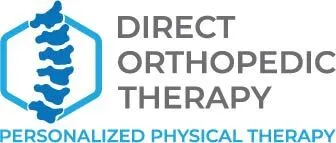Athletes dedicate countless hours to training, pushing their bodies to the limit in pursuit of excellence. However, injuries are an inevitable aspect of sports participation. While returning to play post-injury is a significant milestone, the risk of re-injury looms large, potentially derailing an athlete’s career. This is where physical therapy plays a pivotal role, not only in rehabilitation but also in preventing re-injury. At Direct Orthopedic Therapy, we specialize in guiding athletes safely back to their sport, emphasizing strategies to minimize the risk of re-injury.
Understanding the Risk of Re-Injury
Re-injury refers to the recurrence of the same injury or the occurrence of a new injury in the same area previously affected. Several factors contribute to the heightened risk of re-injury among athletes:
- Incomplete Rehabilitation: Returning to play before full recovery can leave tissues weak and susceptible to re-injury.
- Muscle Imbalances: Overcompensation by uninjured muscles can lead to imbalances, increasing injury risk.
- Improper Movement Patterns: Faulty biomechanics can place undue stress on certain body parts, predisposing them to injury.
- Psychological Factors: Fear of re-injury can alter an athlete’s health and performance, leading to cautious movements that may increase injury risk.
The Integral Role of Physical Therapy in Preventing Re-Injury
Physical therapy is not merely about recovery; it’s about equipping athletes with the tools and knowledge to prevent future injuries. Here’s how:
- Comprehensive Assessment and Personalized Rehabilitation Plans: Every athlete’s injury and body mechanics are unique. A thorough assessment allows physical therapists to develop tailored rehabilitation programs that address specific needs, ensuring a holistic recovery.
- Restoring and Enhancing Range of Motion: Injuries often lead to stiffness and reduced flexibility. Physical therapists employ techniques to restore and even improve the range of motion, ensuring that joints and muscles function optimally.
- Strengthening Muscles and Correcting Imbalances: Targeted strength training focuses on both the injured area and supporting muscle groups, correcting imbalances that could predispose athletes to re-injury.
- Neuromuscular Re-Education: Re-establishing the connection between the nervous system and muscles is crucial. This training enhances coordination, balance, and proprioception, reducing the risk of re-injury.
- Biomechanical Analysis and Correction: By analyzing an athlete’s movement patterns, physical therapists can identify and correct faulty biomechanics, ensuring efficient and safe movements during sports activities.
- Education on Injury Prevention: Knowledge is power. Educating athletes on proper techniques, body mechanics, and self-care empowers them to take proactive steps in preventing re-injury.
Key Components of a Physical Therapy Program Aimed at Preventing Re-Injury
- Initial Assessment and Goal Setting – A comprehensive evaluation identifies the extent of the injury, underlying causes, and the athlete’s goals, forming the foundation of a personalized rehabilitation plan.
- Pain Management and Inflammation Control – Early stages focus on reducing pain and inflammation through modalities such as ice, compression, elevation, and manual therapy techniques.
- Restoration of Range of Motion – Gentle stretching and mobilization exercises aim to restore flexibility and joint mobility, preventing stiffness.
- Strength Training – Progressive resistance exercises target both the injured area and surrounding muscles, building strength and correcting imbalances.
- Proprioception and Balance Training – Exercises that challenge balance and coordination retrain the body’s sense of position, crucial for preventing re-injury.
- Functional Training – Incorporating sport-specific drills prepares the athlete for the demands of their sport, ensuring a seamless transition back to play.
- Education and Empowerment – Teaching athletes about their injury, recovery process, and prevention strategies fosters independence and proactive management.
The Psychological Aspect of Re-Injury Prevention
Fear of re-injury is a significant barrier for many athletes. This apprehension can lead to altered movement patterns, increased muscle tension, and decreased performance, all of which heighten the risk of re-injury. Addressing psychological factors is, therefore, a critical component of rehabilitation.
- Building Confidence Through Gradual Progression – A structured rehabilitation program that allows athletes to experience small, consistent successes can rebuild confidence in their bodies.
- Mental Skills Training – Techniques such as visualization, relaxation, and positive self-talk can help manage fear and anxiety associated with returning to play.
- Open Communication – Encouraging athletes to express their concerns and fears enables therapists to address these issues directly, tailoring the rehabilitation process accordingly.
The Importance of a Multidisciplinary Approach
Preventing re-injury is most effective when approached from multiple angles. Collaboration among physical fitness therapists, athletic trainers, coaches, nutritionists, and sports psychologists ensures comprehensive care.
- Coordinated Care – Regular communication among team members ensures that all aspects of the athlete’s health and performance are addressed.
- Consistent Messaging – A unified approach provides the athlete with consistent guidance, reducing confusion and enhancing adherence to prevention strategies.
- Holistic Support – Addressing physical, nutritional, and psychological needs creates a balanced environment conducive to optimal recovery and performance.
The Importance of Eccentric Training in Re-Injury Prevention
Eccentric training, which involves lengthening of the muscle under tension, has been shown to be particularly effective in strengthening the muscle-tendon unit and preventing injuries. This type of training enhances the muscle’s ability to absorb energy, increases tendon stiffness, and promotes collagen synthesis, all of which contribute to improved resilience against injury. Incorporating eccentric exercises, such as Nordic hamstring curls or eccentric calf raises, into a rehabilitation program can be beneficial for athletes aiming to return to play safely.
How Direct Orthopedic Therapy Can Help
At Direct Orthopedic Therapy, we understand the complexities involved in returning to sport after an injury. Our team of experienced physical therapists is dedicated to providing personalized rehabilitation programs that address both the physical and psychological aspects of recovery. We utilize evidence-based practices, including eccentric training and neuromuscular re-education, to enhance strength, flexibility, and proprioception.
Additionally, we offer psychological support to help athletes overcome fear of re-injury and regain confidence in their abilities. Our goal is to ensure a safe and successful return to sport, minimizing the risk of re-injury and promoting long-term athletic performance and quality of life.
Contact Direct Orthopedic Today
Physical therapy plays a vital role in preventing re-injury for athletes returning to play. Through comprehensive rehabilitation programs that encompass strength training, neuromuscular re-education, psychological support, and education on injury prevention, athletes can achieve a safe and effective return to their sport. At Direct Orthopedic Therapy, we are committed to guiding athletes through this journey, providing the expertise and support necessary for optimal recovery and performance.



